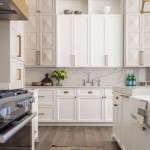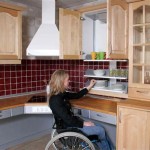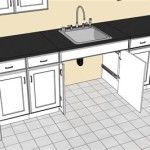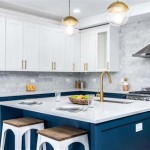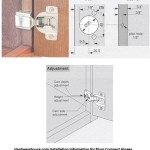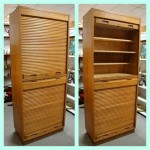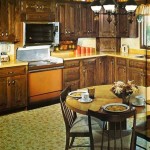Kitchen Cabinets: Mastering the Corner Cabinet Challenge
The kitchen, often considered the heart of the home, presents unique design challenges. Maximizing space, ensuring functionality, and maintaining aesthetic appeal are paramount considerations during a kitchen remodel or new build. One area that frequently poses difficulty is the corner space. Corner cabinets, if poorly planned, can become accessibility nightmares and repositories for forgotten items. However, with careful consideration and the right cabinet design, corner cabinets can be transformed into valuable storage assets.
This article will explore the various options available for corner kitchen cabinets, detailing their advantages and disadvantages, and providing guidance on selecting the optimal solution for specific kitchen layouts and storage needs. The goal is to provide a comprehensive overview that empowers homeowners and designers to make informed decisions about corner cabinet integration.
Understanding the Dilemma: Why Corner Cabinets Are Tricky
The inherent problem with corner cabinets stems from their location. They sit at the intersection of two perpendicular cabinet runs, creating a deep, often awkwardly shaped space that is difficult to access. Standard shelves in a corner cabinet typically result in items pushed towards the back being effectively lost. Reaching for objects requires bending, stretching, and often moving multiple items to retrieve the desired one. This inaccessibility leads to underutilization and frustration.
Furthermore, the design of the cabinet door is crucial. A standard hinged door can obstruct access to the interior, requiring it to be fully open before items can be reached. This can be problematic in smaller kitchens where space is at a premium. The door swing can also interfere with adjacent cabinets or appliances, further complicating the design process.
The challenge, therefore, lies in selecting a corner cabinet solution that effectively addresses these accessibility issues, maximizes storage capacity, and integrates seamlessly with the overall kitchen design.
Exploring Corner Cabinet Solutions: A Detailed Overview
Several specialized corner cabinet solutions have been developed to overcome the challenges associated with this area. Each option offers a unique approach to accessing and organizing the space, with varying degrees of success depending on the specific application. The following are some of the most common and effective corner cabinet solutions:
Lazy Susans: The lazy Susan is a rotating shelf system designed to bring items from the back of the cabinet to the front. These typically consist of two or more circular shelves that rotate independently. Lazy Susans are available in various materials, including wood, plastic, and metal. They provide relatively easy access to items stored in the corner, eliminating the need to reach deep into the cabinet. Full-circle lazy Susans are often preferred as they fully utilize the circular space. Half-moon lazy Susans are another option suitable for angled corner cabinets.
While lazy Susans offer improved accessibility, they do have limitations. The round shape of the shelves can make it difficult to store square or rectangular items efficiently, resulting in wasted space. The weight capacity of the shelves should also be considered, especially when storing heavy items such as cookware. The mechanism's durability can also be a factor, particularly in high-use kitchens.
Blind Corner Cabinets with Pull-Out Shelves: Blind corner cabinets refer to cabinets that extend into the corner but have an adjacent cabinet blocking direct access. To address this, pull-out shelves or organizers are installed. These systems typically consist of shelving units or baskets that slide out of the cabinet, allowing access to the contents. Various types of pull-out shelves are available, including those that pull out and swivel or those that simply slide out in a straight line.
Pull-out shelves offer significantly improved accessibility compared to standard shelves in a blind corner cabinet. They allow users to easily view and retrieve items without having to reach into the dark recesses of the cabinet. The type of pull-out system selected will depend on the specific storage needs and the available space within the cabinet. Considerations include weight capacity, shelf depth, and the smoothness of the sliding mechanism.
Corner Drawers: Corner drawers represent a more modern and innovative approach to corner cabinet design. These drawers are specifically designed to fit into the corner space, maximizing storage and accessibility. They typically feature angled fronts and are configured to make efficient use of the available space. Corner drawers can be configured with multiple drawers or with a single large drawer divided into compartments.
Corner drawers offer several advantages over traditional corner cabinet solutions. They provide full visibility and easy access to all items stored within. The drawer slides allow for smooth and effortless operation, even when the drawers are fully loaded. The angled fronts of the drawers can also create a visually interesting design element in the kitchen. However, corner drawers can be more expensive than other corner cabinet options and may require custom fabrication to fit specific corner dimensions.
Magic Corner Pull-Outs: Magic corner pull-outs are complex systems designed to maximize storage and accessibility in blind corner cabinets. These systems typically consist of multiple shelving units that swing out of the cabinet in a coordinated motion. When the cabinet door is opened, the shelving units on the inside swing out to the front, bringing the contents within easy reach.
Magic corner pull-outs are highly effective at utilizing the full depth of the blind corner cabinet. They offer excellent accessibility and organization, allowing users to easily view and retrieve items. However, these systems can be relatively expensive and may require professional installation. The complexity of the mechanism also means that they may be more prone to maintenance issues than simpler corner cabinet solutions.
Angled Corner Cabinets: Angled corner cabinets, also known as 45-degree corner cabinets, offer a variant from the typical 90-degree corner. They are designed with a diagonal front that faces outward, providing greater access to the cabinet interior. These cabinets can be fitted with shelves, drawers, or lazy Susans, depending on the desired functionality. Angled corner cabinets often require custom modifications to adjacent cabinets to ensure a seamless transition.
They effectively address the accessibility problem by opening the corner and making a wider entrance to the cabinet. While they mitigate deep, difficult-to-reach areas, the angle can still limit the usable space inside to an extent. Careful planning is required to maximize the remaining space.
Key Considerations for Selecting the Right Corner Cabinet
Choosing the appropriate corner cabinet solution requires careful consideration of several factors. Understanding the specific needs and limitations of the kitchen space is crucial to making an informed decision. The following are some key considerations to keep in mind:
Kitchen Layout and Space: The size and configuration of the kitchen will significantly influence the choice of corner cabinet. In smaller kitchens, maximizing storage space is particularly important, and solutions like magic corner pull-outs or corner drawers may be the best option. In larger kitchens, there may be more flexibility in choosing a solution that balances functionality and aesthetics. The presence of appliances or other obstructions near the corner should also be considered.
Storage Needs and Usage Patterns: The types of items that will be stored in the corner cabinet will also influence the choice of solution. If storing a variety of cookware, a lazy Susan or pull-out shelves may be the most practical option. If storing food items, adjustable shelves or drawers may be preferred. Consider how frequently the stored items will be accessed. Items that are used frequently should be stored in easily accessible locations.
Budget and Installation: The cost of different corner cabinet solutions can vary significantly. Corner drawers and magic corner pull-outs are typically more expensive than lazy Susans or standard shelves. Installation costs should also be considered, as some solutions may require professional installation. It is important to establish a budget and choose a solution that fits within those constraints.
Accessibility Requirements: Accessibility is a paramount concern, especially in kitchens designed for individuals with limited mobility. Options like pull-out shelves and corner drawers generally offer better accessibility than standard shelves or lazy Susans. Evaluate the ease of use and consider any specific accessibility requirements that need to be met.
Aesthetic Integration: The corner cabinet should seamlessly integrate with the overall kitchen design. Consider the style, finish, and hardware of the cabinet and ensure that it complements the surrounding cabinetry and appliances. Pay attention to the details, such as the size and shape of the cabinet doors and the alignment of the cabinet with adjacent units.
By carefully considering these factors, it is possible to select a corner cabinet solution that effectively maximizes storage, improves accessibility, and enhances the overall aesthetic appeal of the kitchen.
Optimizing Corner Cabinet Organization and Maintenance
Once the appropriate corner cabinet solution has been selected and installed, proper organization and maintenance are essential to ensure its long-term functionality and performance. Implementing effective organization strategies can maximize storage capacity and make it easier to find and retrieve items. Regular maintenance can prevent problems and extend the lifespan of the cabinet.
Effective Organization Strategies: Maximize the usefulness of any corner cabinet solution by organizing the contents effectively. Utilize containers, dividers, and organizers to separate items and prevent clutter. Group similar items together and label containers for easy identification. Regularly declutter the cabinet to remove unused or expired items. Take advantage of vertical space by using stackable containers or risers. Place frequently used items in easily accessible locations.
Regular Cleaning and Maintenance: Cleaning is a critical aspect of maintenance. Wipe down the interior and exterior surfaces of the cabinet regularly to prevent the buildup of dust, dirt, and grease. Use a mild cleaning solution and a soft cloth to avoid damaging the finish. Inspect the hardware, such as hinges and drawer slides, and tighten any loose screws. Lubricate moving parts as needed to ensure smooth operation. Check for any signs of damage, such as cracks or water stains, and address them promptly to prevent further deterioration.
Safety Considerations: Store heavy items on lower shelves or in drawers to prevent the cabinet from becoming unstable. Avoid overloading shelves or drawers, as this can damage the cabinet structure. Use caution when reaching for items in the corner cabinet to avoid injury. Consider installing lighting inside the cabinet to improve visibility and reduce the risk of accidents.
By implementing these organization and maintenance strategies, homeowners can ensure that their corner cabinets remain functional, accessible, and aesthetically pleasing for years to come. Proper care and attention will maximize the value of this often-challenging space in the kitchen.

5 Solutions For Your Kitchen Corner Cabinet Storage Needs

Diamond At Organization Three Drawer Corner Cabinet

The Best Ideas To Optimize Kitchen Corner Cabinets Arched Manor

The Best Ideas To Optimize Kitchen Corner Cabinets Arched Manor

Corner Kitchen Cabinets Pictures Ideas Tips From

The Best Corner Cabinets For A Kitchen Remodel

Kitchen Corner Cabinets And Storage Victoria Elizabeth Barnes

20 Smart Corner Cabinet Ideas For Every Kitchen

11 Clever Corner Kitchen Cabinet Ideas New Cabinets Remodel Renovation

Corner Cabinet Magic 6 Genius Solutions Kitchen Planner
Related Posts


